Send your pictures of cricket bats and other cricket stuff in unusual places to king@kingcricket.co.uk. It is more than okay to put the cricket thing in the unusual place yourself if you want.
Despite making efforts to steer clear of cricket at the minute, we’re rather struggling to switch on the box without seeing it. If it’s not in a fishing programme, it’s in a Western.
The opening shot of episode two of BBC drama The English shows a game of cricket in Caine County, Powder River in the newly created state of Wyoming in 1890.
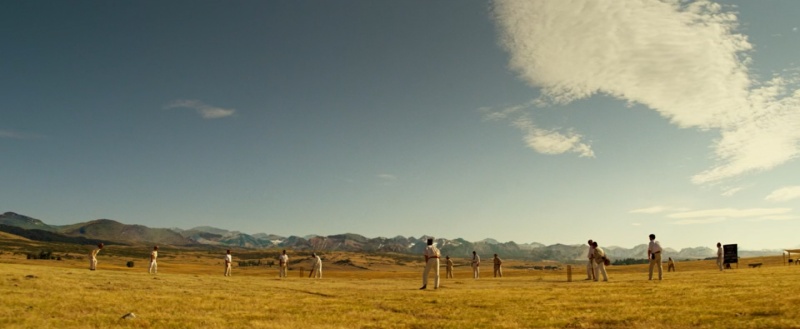
We were quite surprised, but then it is called The English and those guys did have a track record of taking humanity’s greatest accomplishment to new lands. (Weird how the missionary zeal has faded since then and the English only really seem to want India and Australia playing the game other than them.)
Along with alarmingly high colour saturation, another aspect of The English’s very distinct visual style is its camera framing. In this case that means we don’t get to see the ball being bowled or hit.
We see the bowler about to bowl. Then we see a shadow of the ball and batter as he takes a swing…
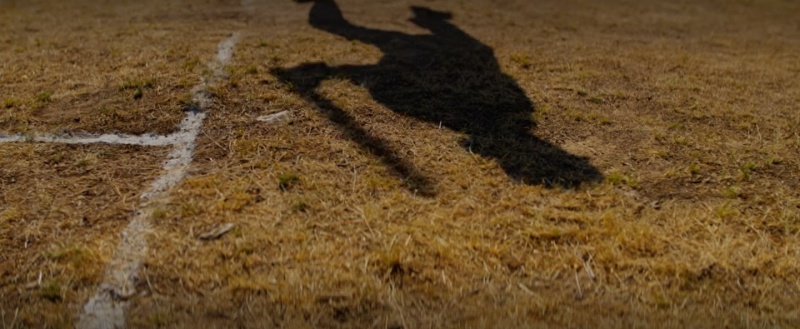
… and then we see your man swing with the sun directly behind him with the ball just out of shot.
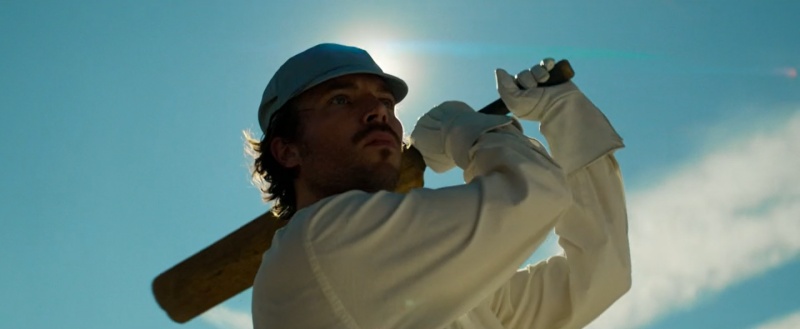
Even without the cricket, we reckon you could instantly determine this guy was English purely from his face.
Straight after that, some fella rides in and does a double equine Shahid Afridi halfway down the pitch. (Obviously we mean wicket tampering here. The horses don’t bite the ball or hit massive sixes or anything.)
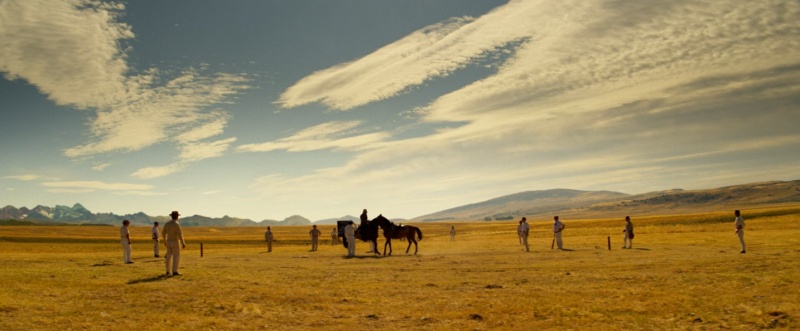
“What?” says your man.
“Better see for yourself,” replies the horseman.
Your man blurrily mounts his steed leaving his hat on the ground and in focus.
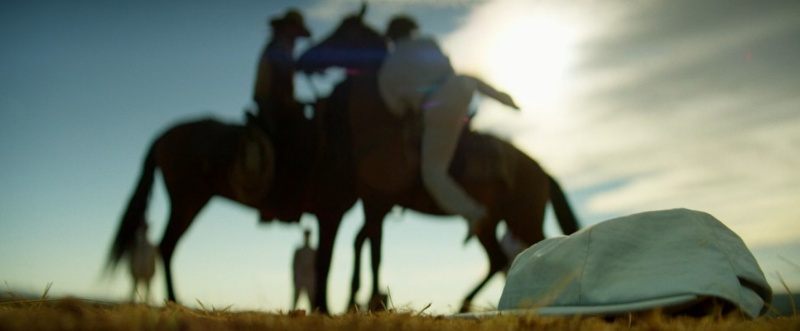
And then they bugger off with great urgency.
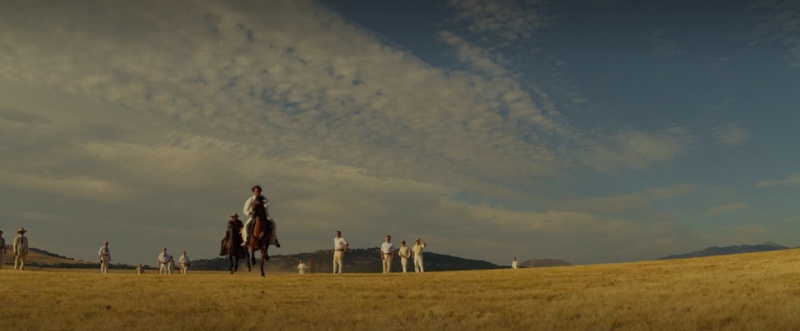
And that’s it for cricket. Or at least it is in episode two. We haven’t seen beyond that yet so don’t be coming round here with your “oh but what about that bit in episode three” and your “oh wow have you seen the end?”
Next week on King Cricket: Cricket in a gardening programme or Bladerunner or something.

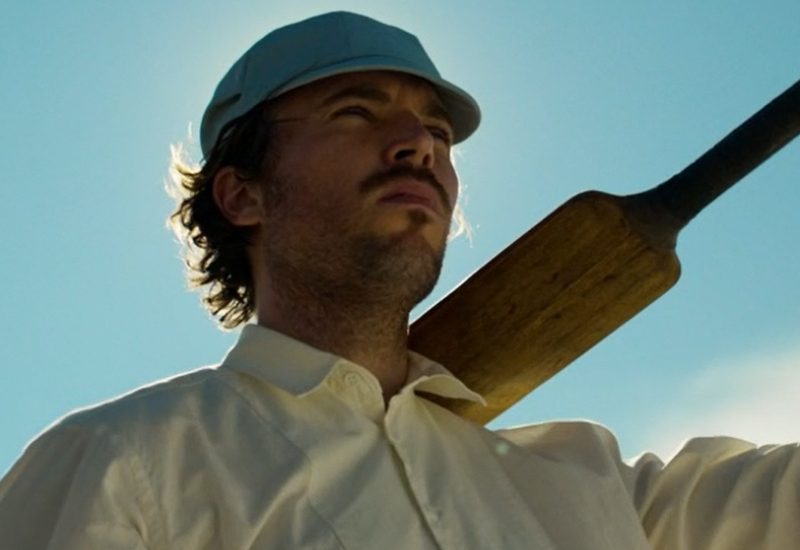
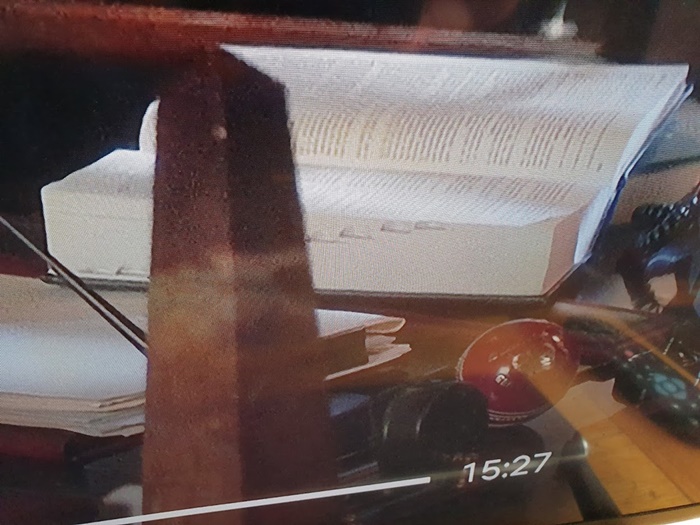

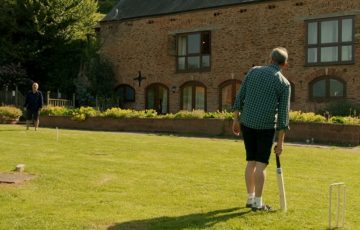
Judging by that follow-through, the batter has either just launched it to the boundary, or has never played cricket before in their life.
The facial hair looks all wrong for 1890.
Either Wyoming had a peculiar subcultural facial hair fashion all of its own in 1890 (which is quite possible of course) or, as I suspect, this actor was only prepared to go so far with his own growth and the BBC budget didn’t stretch to a high-grade 1890 falsy.
The bat looks super-authentic though. Like the antique bats sold in low-end antiques emporia the length and breadth of merry England. And those on display in the Lord’s pavilion.
Hmmmmmmm…..
Ah, private equity. There’s definitely something to be said for keeping your thing too shit to ever attract it.
A lot of comments I’ve seen are along the lines of ‘£400m is loads of money, they should bit their hand off’, without much consideration of why a group of investors might be willing to put up that much money, and what they might be getting in return.
There is a long history of sporting clubs/associations not asking many questions when someone turns up with a load of money (in a rented helicopter or otherwise) and then regretting it later.
One of the all the great PR photos is that Allen Stanford one where they’re all stood around a million dollars in a glass box.
https://www.telegraph.co.uk/content/dam/cricket/2021/10/03/TELEMMGLPICT000002159441_trans_NvBQzQNjv4BqC_LLCXkS_z-CZqgOMP7BezOx-4MymGdue9qBhJ5fcYY.jpeg
We love the idea that nobody thought this was maybe just a little bit too much.
It’s a gnat’s pube away from lying in a bed of money, throwing big handfuls of notes into the air.
A gnat’s pubes and private equity at breakfast-time on a Sunday? I’ll be threatening to cancel my subscription next.
Of course £300M is a lot of money, but it would probably come (as currently proposed) with a lot of strings that would, on closer analysis, make £300M seem like scant compensation for selling a 75% stake in one of our metaphorical major collections of family silver.
You have to look at annuity value not headline price when selling stakes. Nominally – say – £15M per annum. But inflation makes annuity values look high unless you inflation-adjust the annuity value (roughly half the nominal annuity value). $7.5M per annum. That would be just a few-hundred-thousand pounds per county per annum – which would be a nice “no strings attached” guaranteed bonus grant in perpetuity, but would be scant compensation for – say – giving up a proportion of the Blast income. The ECB has already guaranteed the counties more than that as compensation for The Hundred and it is not enough to keep the county system afloat.
Actually it is good news that private equity comes along with a number as high as £300M expressing an interest in investing in English domestic cricket. The problem is that it would be terrible news simply to say “yes” to that figure for the proposition they are likely to be proposing with it.
Hopefully, with the ECB’s “Two Dicks” (Thompson & Gould) at the helm, both Hundred-sceptics, a sensible deal or no deal at all can be worked out.
Whoops don’t know where that dollar sign came from. Sunday morning fingers, presumably.
Inflation-adjusted annuity value in perpetuity of £300M – roughly £7,.5M pa.
Money.
It’s completely obvious that you have to have money to run a major international sport. The problem with private equity is that it reverses this. It’s no longer that money is needed to run the sport, it’s that the sport is needed to make the money. The money becomes the point.
Private equity companies look for two things. They want a dividend, a regular payment for their investment. And they want the value of their investment to increase. After ten years of taking a decent dividend, they will want to sell it on to some other money-making concern, for more that they paid (adjusted). All decisions will necessarily be based on these two things.
The long term interest of cricket is not one of the things they’re interested in. We (the fans) want cricket to invest in schools so that in twenty years there will be a new set of superstars to play the game. This is so far beyond the timescales of PE, it wouldn’t even register. Would reinvesting in junior cricket enhance the value of the sport? Probably not. Would it reduce the dividend? Probably yes. Therefore…
F1 was run under PE for a decade. The result was no Spanish GP, no German GP, no Belgian GP, no San Marino GP. Instead, we got Azerbaijan, Russia, Abu Dhabi, and Bahrain. Why? See above. What about the fans in those places? Who?
Absolutely right, Bert.
It is a similar argument to the discussion we had a week or so ago on another thread apropos there being too much international cricket in consideration of the large sums settled by the TV companies for television rights.
Bodies such as the ECB have a stewardship role (i.e. protecting the long-term future of the game), not just an income maximising role. Private equity has no such brief – profit and wealth maximisation being the sole purpose. If the ECB is to sup with private equity, it should therefore do so with a very long spoon. Initial noises from “The Two Dicks” of the ECB suggest that they are planning to sup appropriately with regard to the recent approach.
That is why I am more gladdened than saddened, (albeit cautiously), by news of the approach.